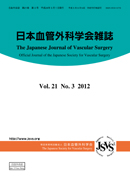Volume 18, Issue 7
Displaying 1-9 of 9 articles from this issue
- |<
- <
- 1
- >
- >|
-
2009 Volume 18 Issue 7 Pages 18_7_i
Published: November 25, 2009
Released on J-STAGE: December 25, 2009
Download PDF (224K)
-
2009 Volume 18 Issue 7 Pages 659-665
Published: November 25, 2009
Released on J-STAGE: December 25, 2009
Download PDF (679K)
-
2009 Volume 18 Issue 7 Pages 667-671
Published: November 25, 2009
Released on J-STAGE: December 25, 2009
Download PDF (516K) -
2009 Volume 18 Issue 7 Pages 673-676
Published: November 25, 2009
Released on J-STAGE: December 25, 2009
Download PDF (789K) -
2009 Volume 18 Issue 7 Pages 677-681
Published: November 25, 2009
Released on J-STAGE: December 25, 2009
Download PDF (643K) -
2009 Volume 18 Issue 7 Pages 683-689
Published: November 25, 2009
Released on J-STAGE: December 25, 2009
Download PDF (1511K) -
2009 Volume 18 Issue 7 Pages 691-694
Published: November 25, 2009
Released on J-STAGE: December 25, 2009
Download PDF (642K) -
2009 Volume 18 Issue 7 Pages 695-700
Published: November 25, 2009
Released on J-STAGE: December 25, 2009
Download PDF (832K) -
2009 Volume 18 Issue 7 Pages 701-705
Published: November 25, 2009
Released on J-STAGE: December 25, 2009
Download PDF (920K)
- |<
- <
- 1
- >
- >|
